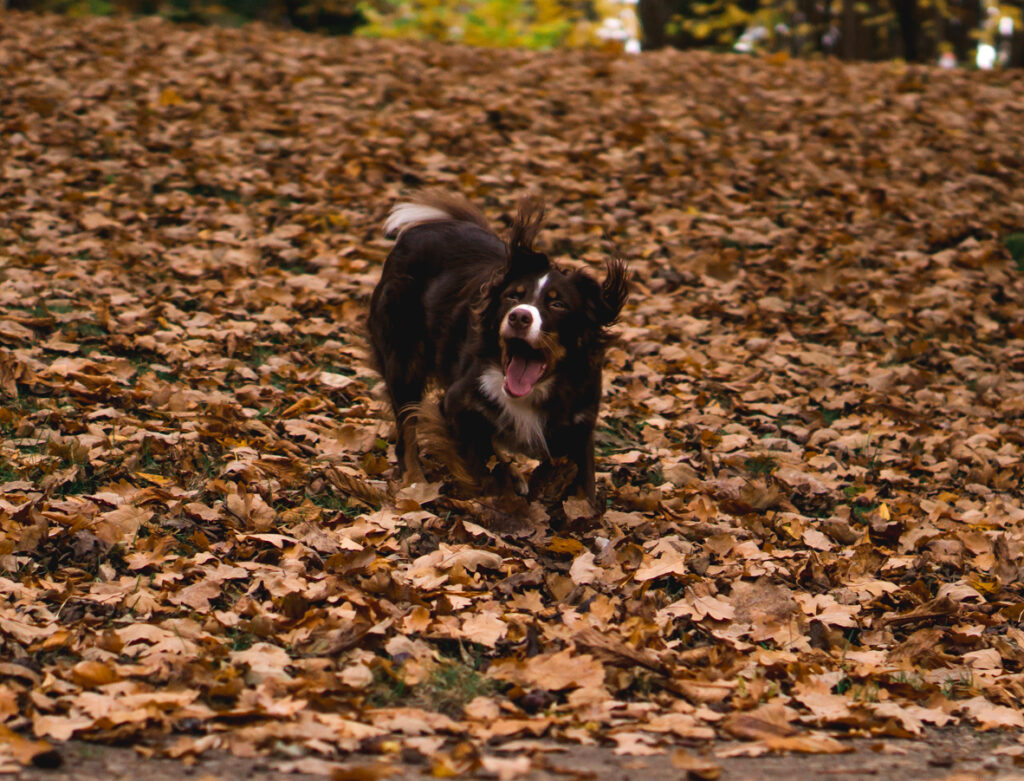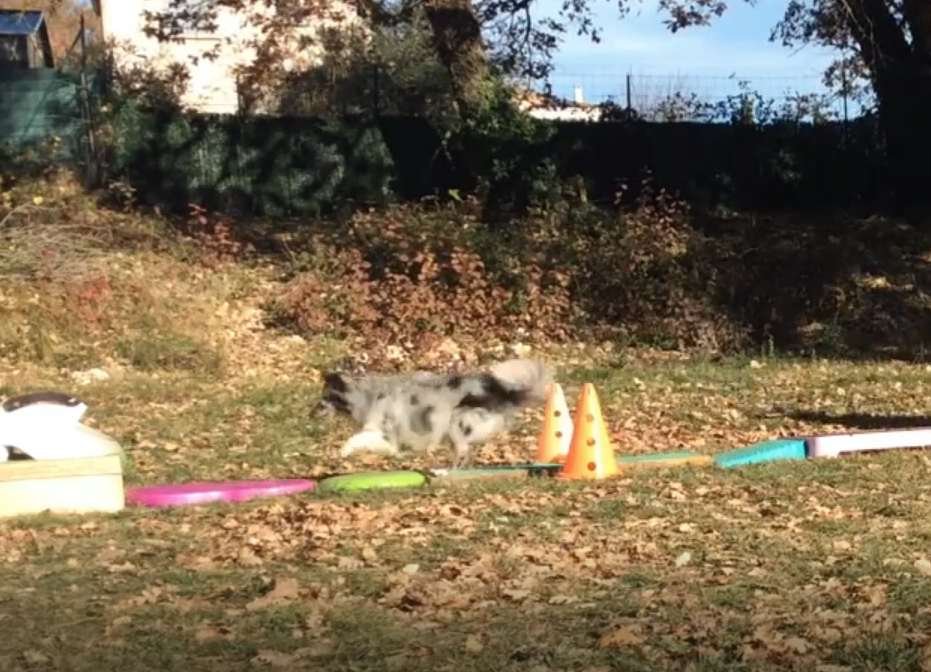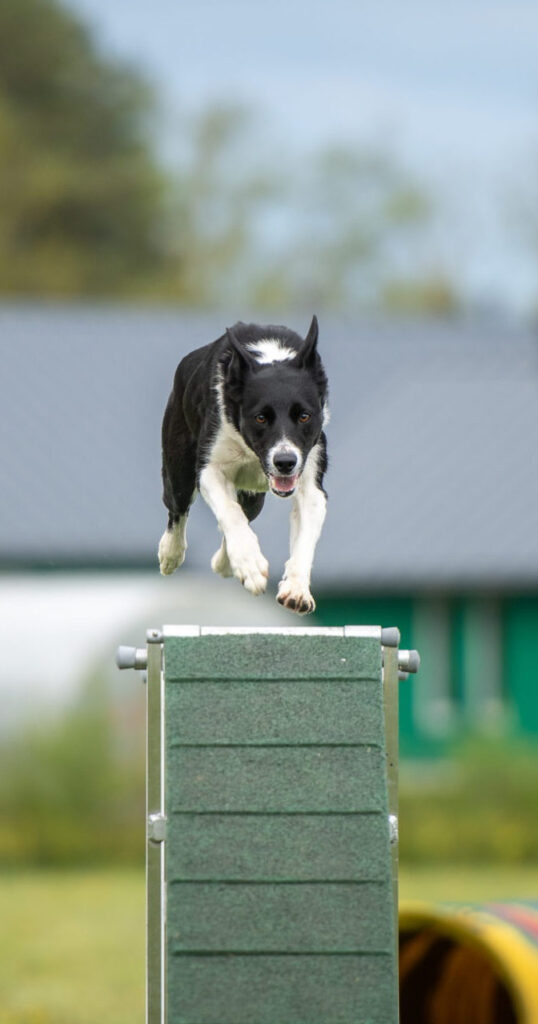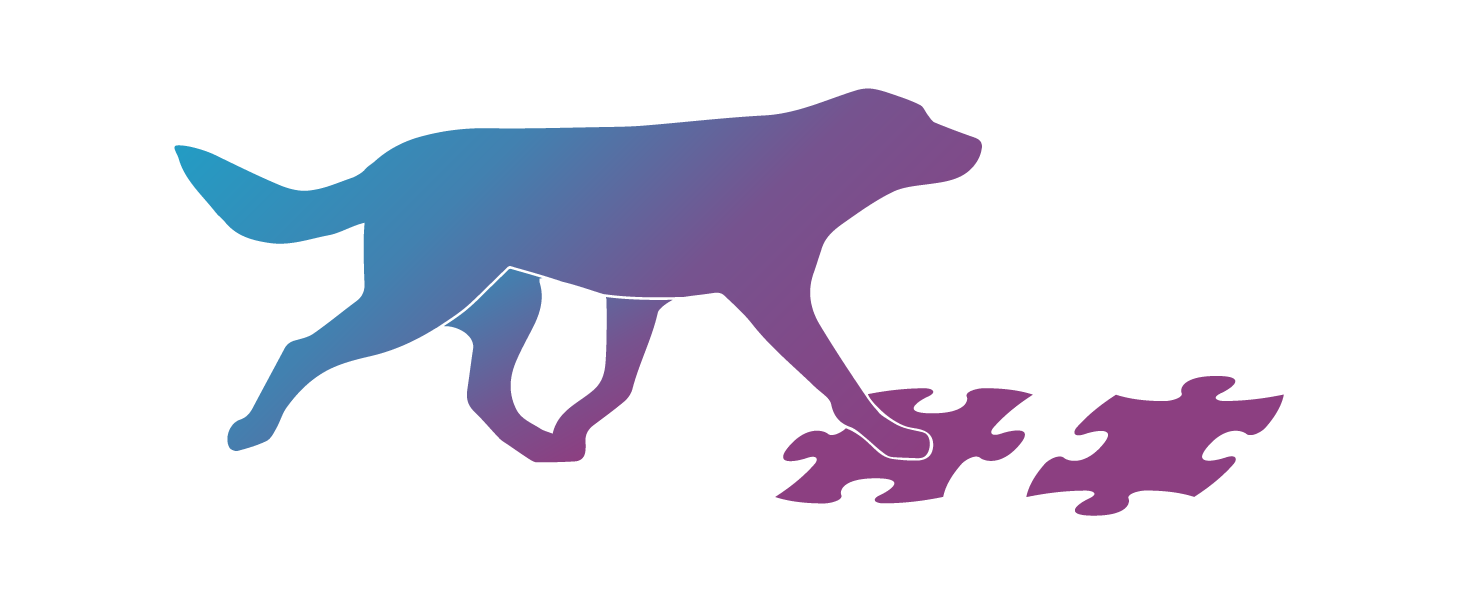“Oh, it’s that left rear leg again” I thought to myself. We were just training weave entries with Mr Bo. I was quite proud of how fast he’d progressed and was just trying some trickier entry angles… When Bo started barking during a left turn entry to the weaves.

Bo is a vocal boy. But usually barking shows up when he’s getting frustrated (read: not a happy place). And what’s worse, he also started showing a millisecond of doubt just when approaching the weaves during that session.
For some reason he wasn’t 100% sure if he really wanted to do the weaves or not… And that’s a dog who is willing to walk on his ears to get his toy and play and run and train!
While the barking and millisecond of doubt could’ve been caused by a number of things – the session may have been too long for Bo or maybe I increased the criteria too quickly. Knowing Bo, I knew very well where to look for the problem…
Bo generally struggled with tight left turns!!
And when reviewing the video from that training session, there it was! His left rear foot was slipping repeatedly during the turn into weaves. Not enough to make him fall to his side or stop him from entering the weaves. But the discomfort was enough to trigger frustration behaviors like slow response to cues and vocalizing.
You may find yourself thinking that slipping happens all the time and what’s the big deal?
And you are right. Slipping and other smaller “accidents” do happen and are a normal part of training – especially with highly driven and motivated dogs who care more about doing the sport and getting to play (or eat their treat) than about slipping.
However, I did bring this example to get you thinking about physical discomfort and the effects it has in your training. Because – while it may look like a small thing – it’s something that I see in my Beyond Dog Sports: Dog Walk students over and over again:
Physical discomfort – like a seemingly small slip during a turn – is often the root cause why dogs start showing frustration, fear and avoidance behaviors in otherwise well structured positive reinforcement training settings.
You may give your dog the best toys and cookies, be kind and never say a harsh word…
But unpleasant consequences and punishment in your training aren’t always linked to you!
Unpleasant consequences can also be slipping, falling or simply losing balance while running.
Imagine this for a second and see how it makes you feel:
Think about yourself walking down the stairs. When you take a step, then you most likely expect to step on a solid surface. But you’ve probably experienced missing a step on the stairs! Where you were expecting to place your foot on a step… but the surface wasn’t there.
How did that make you feel? Did it feel nice, something you’d like to experience again? Or did it scare you? Make you feel uncomfortable? Would you say that experiencing this was actually punishing? Making you want to avoid misplacing a foot on the stairs?
I have to admit… I’m yet to see a person who finds misplacing a foot on stairs reinforcing and something to look forward to!
Now that you know that physical discomfort can be actually punishing, you may also realize that often these situations just happen and there isn’t much you can do about it. Even if you try to minimize physical discomfort in your training, there’s still a good chance that your dog will slip when running on grass or misplace a paw and lose balance when getting onto fitness equipment.
But it pays to be aware of it. If you train an exercise for sport, working through a number of repetitions and your dog repeatedly slips, loses balance, misplaces a foot on a surface (just like in the stairs example above), then there’s a good chance these accidents will start acting as a punishment in your training session – as unpleasant consequences that your dog will try to avoid from happening.
And, as you probably know, punishment – whether intentional or accidental like slipping – comes with a whole set of problems.
- If these unpleasant things are sudden then they may also frighten your dog and the whole exercise experience may become ruined and packed with fear for your dog. Your dog may become slow and cautious during the exercise, leaving you wondering why your otherwise confident dog is struggling with this one exercise
- If your dog doesn’t know how to avoid physical discomfort during the exercise – he doesn’t know how to avoid slipping, or how to avoid misplacing a paw or losing balance – then you will most likely start getting frustration and avoidance behaviors like vocalizing, walking away from the exercise, responding slowly to cues, frantic movements, not being able to focus on the exercise. Like Bo’s example at the very beginning, where he didn’t know how to do the turn without slipping and that triggered frustration behaviors.
- As a result of being worried during the exercise and trying to figure out how to avoid discomfort, your dog’s learning will slow down and focusing on the exercise itself is not a priority for your dog. That sends you to a loop of training more and at the same time your dog experiencing all the negative stuff over and over again until the exercise really isn’t fun anymore to either of you.
Now, what does it have to do with dog walk training?
When I see videos of young dogs just learning the dog walk for the first time, then this exact problem pops up over and over again.
The dog has learnt touching the target mat on the ground or doing the 2-on-2-off position with a prop. And when it’s time to move to a low plank, the dog is clearly struggling: movements are slow and a bit shaky, the dog may be scared to turn around or step close to the edge of the dog walk. There may be cases where the young dog actually does place a paw off to the side and lose balance. That’s accidental punishment right there!
Remember your own (thought)exercise with the stairs? How punishing these unexpected and uncomfortable situations may be!
Most of the time the young dog is so interested in spending time with the handler and getting the reinforcement, that she’s willing to push through all the discomfort. But it doesn’t mean the punishing element isn’t there, every single time the dog misplaces a paw and loses balance, installing fear and frustration right into the dog walk training!
And fear and frustration have a nasty habit of sticking around. Even when the dog is gradually learning to move a bit more comfortably on the dog walk, there’s a chance the performance will be slow and you’ll see frustration behaviors like trying to avoid the dog walk, vocalizing, maybe disengaging and going sniffing between the repetitions.
If you are struggling with your dog moving slowly on the dog walk then could this be the reason why?
I get it! There aren’t many trainers who talk about this and chances are you just didn’t know about the physical discomfort being punishing. But if you are like most of my students, you’d probably like to avoid from happening in the future, right?
The good news is that there’s a way around all these uncomfortable situations on the dog walk. The core reason behind young dogs struggling on the dog walk is that they don’t know how to move on a narrow, high surface.
And this is something you could teach them! You don’t have to wait for the problems to arise, you can teach young dogs how to move on a narrow surface safely before any actual dog walk training.
There are several skills that go into moving on a narrow surface with confidence and speed. I teach these skills in detail in my online course Beyond Dog Sports: Dog Walk , sharing them here would take a lot more blog posts and I really don’t want to overwhelm you!
But here’s the most valuable tip that you can put into use straight away with your young agility dog (or an older dog who is struggling with the dog walk!): find a way to create a long narrow platform at home. It could be a wooden plank or just several fitness platforms in a row.
Guide your dog to move back and forth on this narrow platform. One way for achieving this is getting your dog on the platform with all 4 feet, place a treat a bit further down the platform and let your dog go and get the treat. And repeat. Do it 2-3 minutes per day.

If you see your dog becoming really confident with the current setup, not misplacing paws off to the side and really controlling her movements, see if you can lift the platform a bit higher and repeat this same exercise.
This seemingly easy exercise will get your started by helping your dog become more comfortable when moving on narrow surfaces – she will know her own size better, how much space she has and how to move on a plank.
What benefits are waiting for you and your dog on the other side?

Teaching your dog to move on a narrow surface and keeping his paws on the equipment at all times, before your dog walk training, helps to reduce accidental punishment in your training.
Knowing how to move on a narrow surface empowers your careful dog to feel more confident on the actual dog walk and reduces the chances of accidental punishment sneaking into your training sessions.
As a result your dog will be safer on the dog walk, there’s less chance of broken toes from misplaced paws or serious injuries from falls.
Your dog will be more confident, knowing exactly how to move without losing balance or falling off. And will be able to learn hitting the contact zone faster.
The better your dog knows HOW TO MOVE on a narrow platform, the easier training the dog walk will become.
And you won’t have accidental punishment determining your success in training!
If you need more help and support with the exercises then I’ve got just the thing for you: a full online course packed with exercises that will help you train the dog walk faster, improve your dog’s confidence on the dog walk and make the dog walk safer for your dog. It’s called Beyond Dog Sports: Dog Walk. The price is going up soon, so if you’ve been thinking about joining then now is the perfect time 😉
Click here to find out more
Mari Valgma, CPCFT
